SLVU435A February 2011 – January 2022 TPS53126
- Trademarks
- 1 Introduction
- 2 Electrical Performance Specifications
- 3 Schematic
- 4 Connector and Test Point Descriptions
- 5 Test Setup
- 6 Test Procedure
- 7 Performance Data and Typical Characteristic Curves
- 8 EVM Assembly Drawings and Layout
- 9 Bill of Materials
- 10Revision History
8 EVM Assembly Drawings and Layout
The following figures (Figure 8-1 through Figure 8-6) show the design of the TPS53126EVM-600 printed-circuit board (PCB). The EVM has been designed using a 4-layer, 2-oz copper-clad circuit board of 3.5 inch by 2.7 inch to allow the user to easily view, probe, and evaluate the TPS53126 control integrated circuit in a practical application. Moving components to both sides of the PCB or using additional internal layers can offer additional size reduction for space constrained systems.
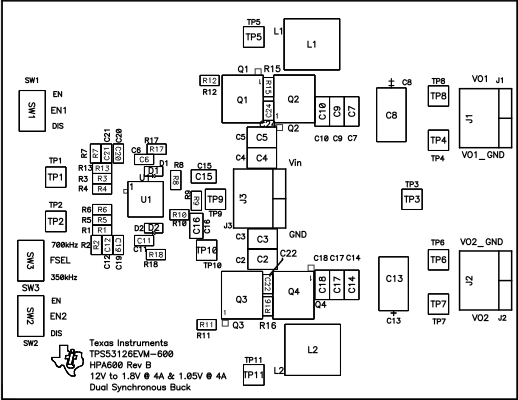 Figure 8-1 Top Assembly
Figure 8-1 Top Assembly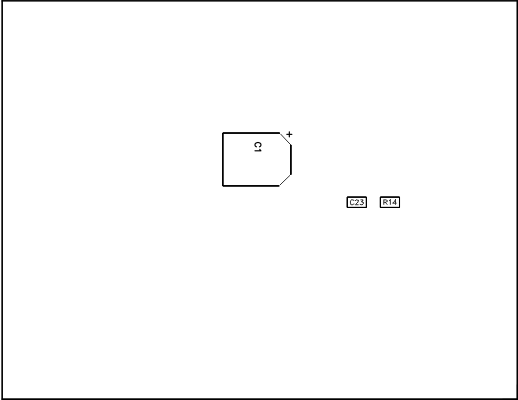 Figure 8-2 Bottom Assembly
Figure 8-2 Bottom Assembly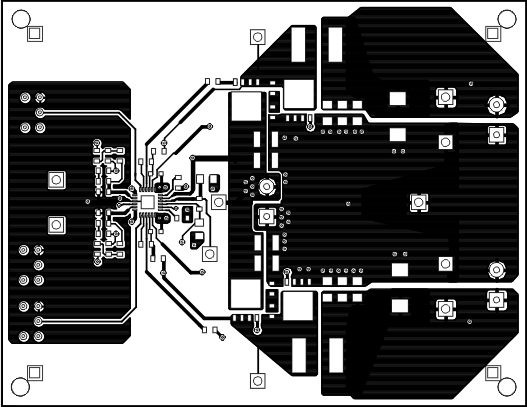 Figure 8-3 Top Layer
Figure 8-3 Top Layer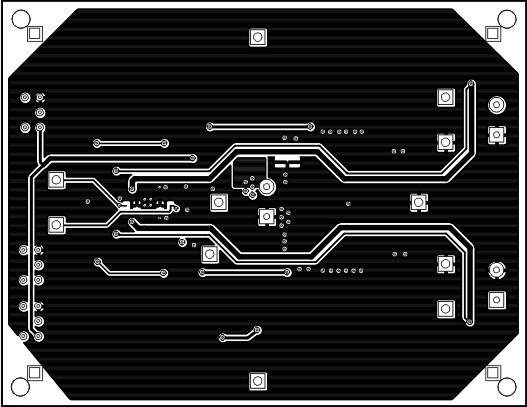 Figure 8-4 Bottom Layer
Figure 8-4 Bottom Layer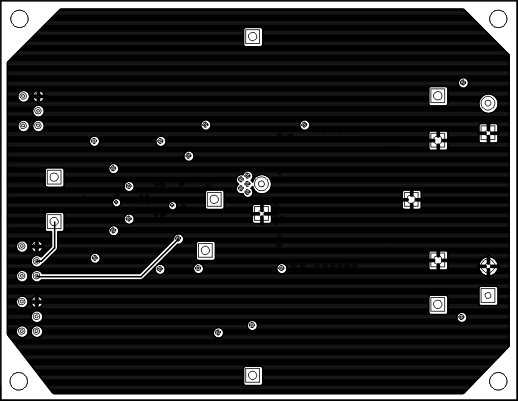 Figure 8-5 Internal Layer 1
Figure 8-5 Internal Layer 1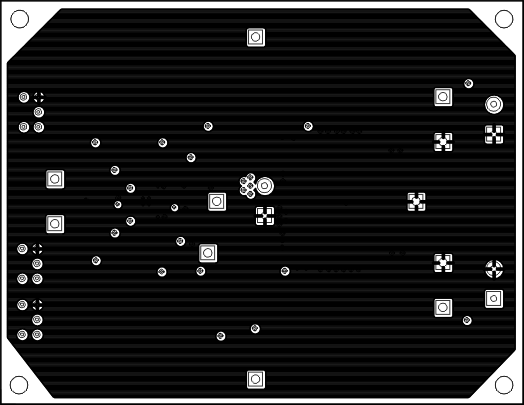 Figure 8-6 Internal Layer 2
Figure 8-6 Internal Layer 2